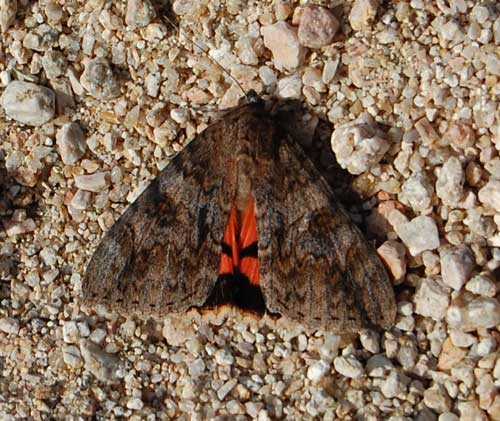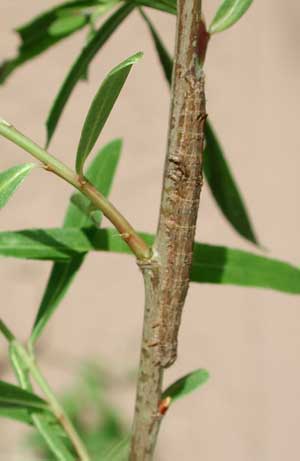Jessica's Underwing
Catocala jessica

This moth was photographed 10 May 2008 just before it flew off into it's riparian habitat at Mesquite Wash. It was reared from the larva (caterpillar) at right which was found 01 April 2008..
Noctuidae -- a Moth Family
Catocala moths are supreme at crypsis. They would be a tasty morsel for a sharp-eyed bird such as a Brown-crested Flycatcher. By day the red underwing is concealed by the flake-of-bark top wing. If that ever fails their fall back is to suddenly show blood-red. If nothing else this short wave length red requires the predator to re-adjust its focus - giving the moth a split-second lead on escape. The caterpillar is also an amazing work of cryptic coloration and behavior. Appearing as a stretch of stem-bark, closely pressed to the stem. Thus they hide by day and feed at night when sighted predators are sleeping.

This is one of the many insect species to utilize Goodding's Willow (Salix gooddingii) as a host plant. One result is that insectivorous birds and lizards find much to hunt for in these shady trees of riparian habitats in the Sonoran Desert. This is in marked contrast to Salt Cedar (Tamarix pentandra), an exotic invasive, that is nearly void of anything for birds to eat.